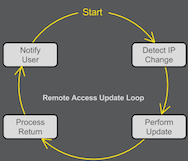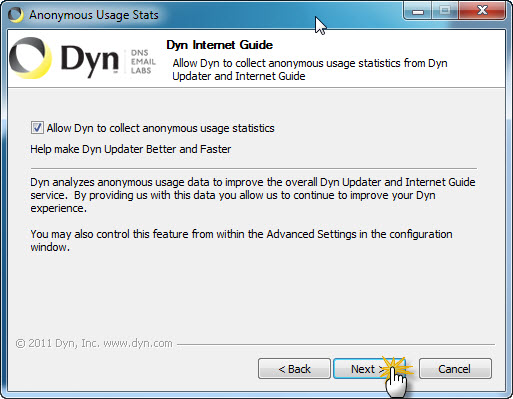

#Dyn updater the specified account already exist windows
Option 3: Create a non-administrator user accountįor ease-of-configuration, ScienceLogic recommends creating an Active Directory user account.Īfter creating your Windows Server user account, depending on your setup and the servers you want to monitor, you might also need to configure the user account for remote PowerShell access to the following server types:.Option 2: Create a local user account with Administrator access.Option 1: Create an Active Directory Account with Administrator access.To configure the Windows Server user account that SL1 can use to make PowerShell requests, complete one of the following options: You will include this user account information when creating the PowerShell credential that SL1 uses to collect data from the Windows Server. To enable SL1 to monitor Windows servers, you must first configure a user account on a Windows Server that SL1 can use to make PowerShell requests. Step 1: Configuring the User Account for the ScienceLogic Platform Optionally, you can increase the number of PowerShell Dynamic Applications that can run simultaneously against a single Windows server.If you are configuring multiple Windows servers for monitoring by SL1, you can apply these settings using a Group Policy. Optionally, configure a Windows server as a Windows Management Proxy.Configure a Server Authentication Certificate to encrypt communication between SL1 and the Windows Server.The user account can either be a local account or an Active Directory account.įor ease of configuration, ScienceLogic recommends using an Active Directory account that is a member of the local Administrators group on the Windows Server. Configure a user account that SL1 will use to connect to the Windows Server.To do so, you must perform the following general steps: To monitor a Windows Server using PowerShell Dynamic Applications, you must configure the Windows Server to allow remote access from SL1. If multiple domains are in use, ensure that they are mapped in the section of the Kerberos nf file on the Linux operating system of the SL1 collector appliance.If unencrypted communications is being used, then port 5985 on the Windows server should be opened for HTTP traffic If encrypted communication between the SL1 Data Collector and monitored Windows servers is desired, port 5986 on the Windows server should be open for HTTPS traffic.When using an Active Directory user account as the SL1 credential, port 88 on the Windows Domain Controller, for the Active Directory domain, should be open for Kerberos authentication.

Port 53 to the domain's DNS server should thus be available. Forward and Reverse DNS should be available for the target Windows server from the SL1 Data Collector.Before configuring PowerShell, ensure the following:


 0 kommentar(er)
0 kommentar(er)
